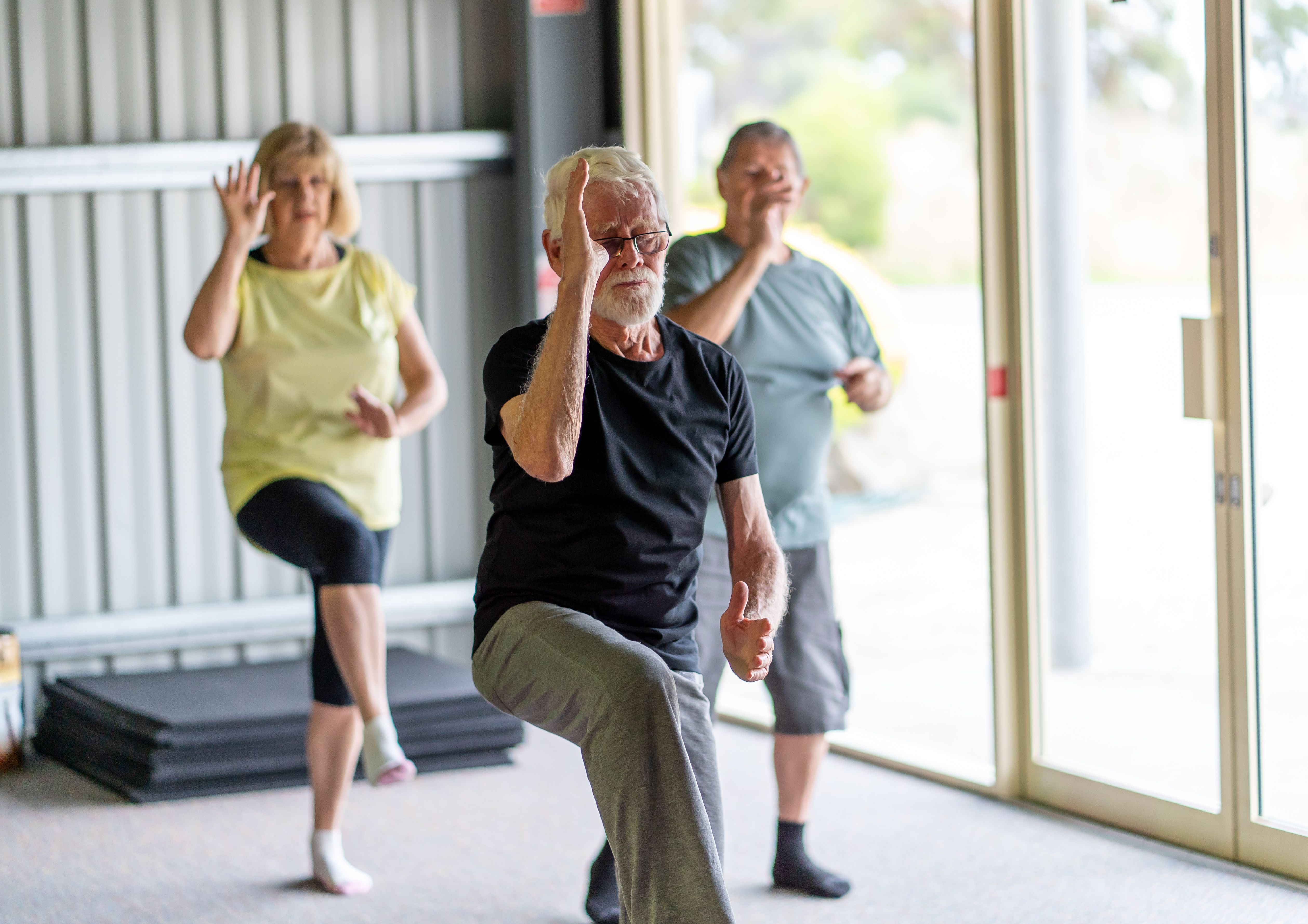- Center on Health Equity & Access
- Clinical
- Health Care Cost
- Health Care Delivery
- Insurance
- Policy
- Technology
- Value-Based Care
Aerobic Exercise, Tai Chi Improved Sleep in Patients With Lung Cancer
Improved psychological distress and physical function were among the benefits of doing aerobic exercise and tai chi as a patient with lung cancer.
According to a study published in JAMA Oncology, patients with advanced lung cancer saw improvements in all circadian rhythm, physical function, sleep, and psychological distress when they consistently took part in aerobic exercise (AE) and tai chi (TC) as part of their survivorship care.
Patients with advanced lung cancer have chronic sleep disturbances that affect them psychologically, the study noted. The well-being of patients with cancer can be improved through physical exercise. AE and mind-body exercises (MBEs) have been found to help patients with early-stage cancer. This study aimed to evaluate both AE and TC and their effects on sleep quality, sleep parameters, and health-related quality of life in patients who had advanced lung cancer.
Group of elderly senior people practicing Tai chi class in age care gym facilities | Image credit: SB Arts Media - stock.adobe.com

The randomized clinical trial compared groups doing AE and TC with a control group. All patients were recruited between December 19, 2018, and September 7, 2021. Patients came from 3 major public hospitals in Hong Kong, notably the oncology and medical outpatient clinics. Patients who were diagnosed with stage IIIB or IV non-small cell lung cancer, were aged 18 years or older, had no other cancer diagnoses in the previous year, did not exercise regularly, had an Eastern Cooperative Oncology Group Performance Status of 0 to 2, and were not actively participating in classes for AE or MBE were included. Patients who had substance use, neurological, or psychiatric disorders were excluded.
All patients were randomized to 3 groups of AE, TC, and control for the 16-week study. AE took place twice per month in a group setting and home-based exercises, with each group session lasting an hour. Home exercises were encouraged for 150 minutes each week for moderate intensity and 2 to 3 resistance exercises every other day. Patients who took TC took 60-minute group sessions twice per week. All patients performed the Yang style of TC at the end of the 16 weeks for evaluation. Patients in the control group were told to get physical activity in a quantity recommended by the World Health Organization. Data were collected at baseline, after the intervention (T1), and 8 months after the intervention was completed (T2).
Subjective sleep quality was collected using the Pittsburgh Sleep Quality Index (PSQI). Fatigue, psychological distress, physical functioning, cortisol rhythms, 1-year survival, objective sleep parameters, and quality of life were all evaluated as well.
There were 226 participants in this study who were split equally into the 3 groups. AE and TC had mean (SD) participation rates of 8.50 (1.76) and 27.30 (2.94). The mean age of the participants was 61.41 (range, 35-78) years with 54.0% female participants. Self-practice durations varied between the 3 groups, with 147.50 (48.30) minutes in the AE group, 127.83 (50.01) in the TC group, and 71.02 (91.29) minutes in the control group.
A reduction in PSQI was found in both the AE (difference between groups, –2.72; 95% CI, –3.97 to –1.46) and TC (difference between groups, –4.21; 95% CI, –5.48 to –2.94) groups when compared with the control group at T1. These differences persisted into T2 for both AE (difference between groups –1.75; 95% CI, –3.24 to –0.26) and TC (difference between groups, –3.95; 95% CI, –5.41 to –2.49). A greater reduction in PSQI was found in the TC group when compared with the AE group at both T1 (difference, –1.49; 95% CI, –2.77 to –0.22) and T2 (difference, –2.20; 95% CI, –3.57 to –0.83).
Fatigue scores were lower in the TC group compared with AE and control at T1 and control alone at T2. Both TC and AE led to lower anxiety and depression scores and improvements in the 6-minute walking test. The median survival time was higher in the AE group (47.76 weeks) compared with the control (44.20 weeks) but the TC group had the highest (49.18).
There were some limitations to this study. Participants were aware of the group assignment, which could have led to expectation bias. The dosage of AE was lower than TC. There may have been some patients who were more determined to change their lifestyle. The self-practice participation being self-reported could have led to an overestimation of physical activity. Secondary end points have results that should be considered more exploratory due to multiple comparisons.
Improvements in sleep disturbances, anxiety, depression, and physical functioning were all found when patients with advanced lung cancer participated in AE and TC, with patients in TC having improved sleep even over the group with AE. The researchers concluded that both AE and TC should be considered as therapeutic options for patients with advanced lung cancer.
Reference
Takemura N, Cheung DST, Fong DYT, et al. Effectiveness of aerobic exercise and tai chi interventions on sleep quality in patients with advanced lung cancer: a randomized clinical trial. JAMA Oncol. Published online December 7, 2023. doi:10.1001/jamaoncol.2023.5248
Insufficient Data, Disparities Plague Lung Cancer Risk Factor Documentation
September 24th 2023On this episode of Managed Care Cast, we speak with the senior author of a study published in the September 2023 issue of The American Journal of Managed Care® on the importance of adequate and effective lung cancer risk factor documentation to determine a patient's eligibility for screening.
Listen
